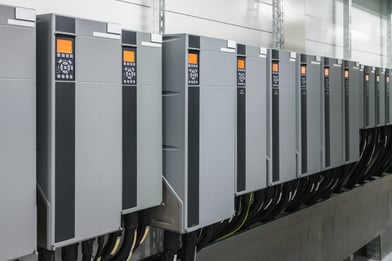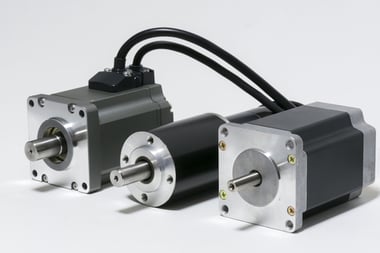 Getting the best out of your operations means doing more than simply connecting a motor to a piece of electrical equipment. You will also need a drive to act as an intermediary, moderating the flow of power from the motor to the equipment and supporting safer, more efficient results.
Getting the best out of your operations means doing more than simply connecting a motor to a piece of electrical equipment. You will also need a drive to act as an intermediary, moderating the flow of power from the motor to the equipment and supporting safer, more efficient results.
But how do you choose the right drive? How do you select a drive that aligns with the specifics of your motor and your desired application? Read on to learn more.
Different Types of Drive
VSDs, VFDs and ASDs
The terms VSD (Variable Speed Drive), VFD (Variable Frequency Drive) and ASD (Adjustable Speed Drive) all refer to the same thing. This is a device that controls the output of an electric motor, dictating the turning speed, or torque, the motor generates.
Being able to vary the speed of a motor provides a number of benefits, including:
- Better longevity of parts
- Reduced operating costs as the motor does not need to be at full power all of the time
- Reduced carbon footprint during operation
- Reduced risk of damage to the motor or other components
- Control over motor direction and torque output
Soft Starter Drives
A soft starter drive is a simpler set up than a VSD, VFD or ASD, but it still exercises some control over the connection. These drives will typically implement a "soft start." In other words, they will gradually increase the output of the motor during start-up, reducing the stress placed on the motor during this phase of operation and increasing its operation lifespan.
Across the Line and Direct On Line (DOL) Drives
Across the Line or Direct On Line Drives maintain a steady, uniform output from the motor. There is no control over different levels of output, and there is no variation in speed, frequency or other function. This is a simpler system. But it is also a less efficient one as the motor will be running at full capacity whenever it is turned on. As a result, the system components may experience more wear and tear over time, and the CO2 footprint of the system is increased.
Matching Up the Drive and Motor
Aligning the Ratings
Drives are often rated according to their horsepower capability. However, this does not tell the whole story, and it can be misleading when it comes to matching up the drive to the motor.
The drive manufacturer will also provide power ratings (measured in volts), current ratings (measured in amps) and frequency ratings (measured in hertz). There will be an input and output rating for each metric. The motor must meet the input rating parameters, while the appliance or piece of equipment that is being powered must fall within the output rating parameters.
Constant or Variable Torque
Depending on the application, you may need either a constant or a variable torque drive. Variable torque loads reduce their torque demand as the speed is reduced, and the drive will need to reflect this. Motors powering blowers or centrifugal pumps will need to be connected via a variable torque drive.
Equipment that requires a constant torque load across all speeds – where the motor torque and the load torque remain the same during steady-state operation – includes lift drives, cranes, hoists and rotary and screw compressors.
Heavy Duty and Light Duty
In many, but not all, cases, constant torque applications will require a heavy duty drive, capable of operating above its maximum load capacity for longer. This generally applies to conveyors, compressors and hoists, where higher levels of output may be required. Conversely, many variable torque applications require lighter duty drives. These applications include fans and pumps, where the output load demand is not as intense.
A lighter duty drive may be able to operate at around 120% of its rated capacity for a period of one minute before it cuts out. On the other hand, a heavy duty drive may be able to run at 150% of its rated capacity for one minute, while some heavier duty drives may be able to extend this to a full two minutes.
Changing Directional Vectors
Motors may be required to shift their directional vectors for some applications. Examples of this include cranes and hoists that need to move both up and down while also applying breaking pressure where necessary, as well as fans that may need to blow air out or suck air in at different phases of operation.
A flux vector drive will achieve continuous monitoring of motor speed, which can be adjusted either directly via manual controls or remotely with the right system. Rotational direction can be altered as and when required without needing to switch phases.
Make the Right Choice and Optimise Your Operation
Martin Thomas, European Marketing Manager at Radwell said “Failing to match up the correct drive with the correct motor for your application makes life difficult for your business. You may find that the motor is simply unable to carry out the task as the required level of output cannot be transmitted to the equipment. Or you may discover that the set-up becomes overloaded and cuts out. Other issues associated with choosing the wrong drive for your motor include increased operational costs, damage to puts within the system and an unhealthy impact on our environment.
Take your time to match up the correct drive and motor combination and run your operations as efficiently as possible.”









